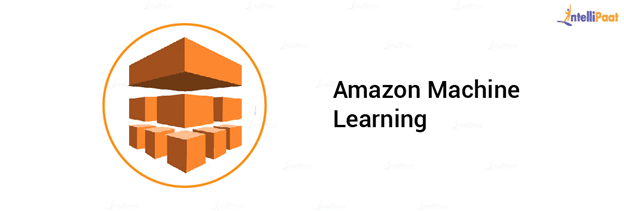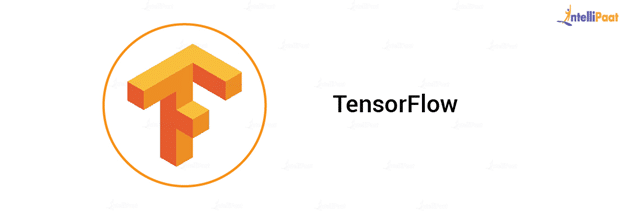Let’s go over the interfaces, libraries, and tools that are indispensable to the domain of Machine Learning. Here is the list of topics that this blog will cover along with the top 15 Machine Learning Frameworks:
- What is a Machine Learning framework?
- Top 15 Machine Learning Frameworks
- Amazon Machine Learning
- Apache SINGA
- TensorFlow
- Scikit-Learn
- MLlib Spark
- Spark ML
- Caffe
- H2O
- Torch
- Keras
- mlpack
- Azure ML Studio
- Google Cloud ML Engine
- Theano
- Veles
- Choosing Machine Learning Frameworks
- Conclusion
What is a Machine Learning framework?
In its true sense, a Machine Learning framework is a collection of pre-built components that support the process of building Machine Learning models in a more efficient and optimized manner. It uses traditional methods and is very convenient for developers to use. As far as the computation process is concerned, these frameworks provide for parallelization. Good ML frameworks tackle the complexity of Machine Learning to make it more convenient and available for developers.
Top 15 Machine Learning Frameworks
Today, we will take a look at the top 15 Machine Learning tools and frameworks that you can use to make ML modeling easier.
Amazon Machine Learning

Amazon Machine Learning is a cloud-based service that consists of visualization tools for developers with any level of skills. For predictions, Amazon ML uses simple APIs in applications. There is no need for custom code or any kind of infrastructure management for this. Amazon ML can run multiclass categorization, binary classification, or regression on the data stored in Amazon S3, Amazon Redshift, or RDS to create a model. There is no need for complex algorithms with Amazon ML.
Amazon ML can:
- Measure the quality of Machine Learning models through evaluation
- Carry out batch predictions and real-time predictions
- Generate predictions from the patterns in the input data using ML models
** Apache SINGA**
Apache SINGA is a distributed Deep Learning platform that was developed by the NUS Big Data Systems team. It comprises an open-source ML library with a scalable architecture that can run over a wide range of hardware, and due to its capability to support a number of Deep Learning models, SINGA allows users to customize the models. The programming model is quite simple that makes the distributed training process transparent to the users.
Training a Deep Learning model or submitting a job in SINGA requires users to configure the job with their own built-in layer, updater, etc., which is not the case in Hadoop.
TensorFlow

TensorFlow is an open-source library developed by Google Brain, which uses data flow graphs during numerical operations and performances. It comes with a rich set of tools and requires a sound knowledge of NumPy arrays. Batches of data called tensors are processed by a series of algorithms described by a graph that can be assembled with Python or C++. TensorFlow can run on both CPUs and GPUs.
TensorFlow is one of the most common Machine Learning frameworks. While it is simple enough to generate a prediction on a given dataset, it can also handle multiple data pipelines, the customization of all the layers and parameters of a model, data transformations to fit the model, training multiple machines without compromising user privacy, etc.
Scikit-Learn
Scikit-Learn is a free ML library and is aPython Machine Learning framework. It is designed to leverage Python’s numerical and scientific libraries, namely, NumPy, SciPy, and Matplotlib. It is open-source, reusable, and has tools for several ML tasks such as:
- Linear regression
- Clustering
- Support vector machines (SVMs)
- K-nearest neighbor
- Stochastic gradient descent models
- Decision tree and random forest regressions
SciKit can also assess the performance of a model with the help of tools like the confusion matrix. From Scikit-learn, users can always move to other frameworks seamlessly.
MLlib Spark
MLlib Spark is the ML library by Apache Spark, which includes common learning algorithms and utilities, along with the following:
- Higher-level pipeline APIs
- Clustering
- Regression
- Dimensionality reduction
- Collaborative filtering
- Lower-level optimization primitives
- Classification
As is the case with most Machine Learning frameworks, it aims to make practical Machine Learning convenient and scalable. MLlib has APIs in Java, Python, R, and Scala.
Spark ML
Spark ML can handle large matrix multiplications. This is possible because it runs in clusters, and the calculations are done on different servers. Matrix multiplications require a distributed architecture for optimized speed and reduced memory issues while handling large datasets.
It is possible to use Spark ML with Spark SQL DataFrames, which is quite familiar to most Python programmers. Spark ML allows working with the Spark RDD data structure instead of NumPy arrays. This eliminates some complexity from data preparation for ML algorithms as it creates Spark feature vectors.
Caffe
Keeping speed, modularity, and articulation in mind, Berkeley Vision and Learning Center (BVLC) and the community contributors came up with this Deep Learning framework called Caffe. Its speed makes it ideal for research experiments and production edge deployment. It comes with a BSD-authorized C++ library with a Python interface, and users can switch between CPU and GPU. Google’s DeepDream implements the Caffe framework. However, Caffe is observed to have a steep learning curve, and it is difficult to implement new layers with Caffe.
** H2O**
H2O is another one of the open-source Machine Learning frameworks. It is business-oriented and implements predictive analytics and math to help drive decisions based on data and insights. This AI tool brings together unique features such as database-agnostic support for all common database and file types, easy-to-use WebUI and familiar interfaces, and the best of open-source Breed technology.H2O comes with several models and includes Python, R, Java, JSON, Scala, JavaScript, and a web-interface. Its core code is in Java, and the REST API allows access from any external program or script to H2O’s capabilities. It allows users to work with existing languages and tools and extend into Hadoop environments without any issues. H2O can be used in predictive modeling, advertising technology, healthcare, customer intelligence, risk and fraud analysis, insurance analytics, etc.
Torch
Torch has a fast scripting language and is very efficient. It aims to feature maximum flexibility, simplicity, and speed while users build scientific algorithms. It supports ML algorithms that prioritize GPUs and has an underlying C/CUDA implementation and LuaJIT.

Torch includes community-driven packages in Machine Learning, parallel processing, signal processing, computer vision, image, audio, video, and networking, and many more.
Keras
Keras is built on top of TensorFlow but is not limited to it. This makes modeling simple and straightforward. This neural network library can use the same code to run both on CPU and GPU. Some of the coding processes can be simplified with Keras.
Keras can be used with:
- R
- Theano
- Microsoft Cognitive Toolkit (CNTK)
- PlaidML
mlpack
The ML framework, mlpack is C++ based and specifically designed to optimize speed, scalability, and use. There are 16 available repositories, and the implementation of this ML library can be carried out with command-line executables for novice users or with the C++ API for high performance and flexibility. The algorithms provided by this framework can be later integrated into large-scale solutions.
By using C++ templates, users can avoid copying datasets, and they work on expression optimizations that are not available in other languages.
#machine-learning #tensorflow #keras #scikit-learn #python
